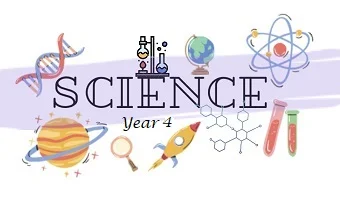Science for Year 4
School Education divided into 13 grade levels. Each grade level has certain standards for different skills. Teacher’s job is to detect students’ real year level and her/his needs to continue her/his academic development.
A comprehensive set of progressive learning objectives for science year 4. The objectives detail what the learner should know or what they should be able to do in science in year 4 of primary education.
E Scientific enquiry
Ep Ideas and evidence
• 4Ep1 Collect evidence in a variety of contexts.
• 4Ep2 Test an idea or prediction based on scientific knowledge and understanding.
Ep Plan investigative work
• 4Ep3 Suggest questions that can be tested and make predictions; communicate these.
• 4Ep4 Design a fair test and plan how to collect sufficient evidence.
• 4Ep5 Choose apparatus and decide what to measure.
Eo Obtain and present evidence
• 4Eo1 Make relevant observations and comparisons in a variety of contexts.
• 4Eo2 Measure temperature, time, force and length.
• 4Eo3 Begin to think about the need for repeated measurements of, for example, length.
• 4Eo4 Present results in drawings, bar charts and tables.
Eo Consider evidence and approach
• 4Eo5 Identify simple trends and patterns in results and suggest explanations for some of these.
• 4Eo6 Explain what the evidence shows and whether it supports predictions. Communicate this clearly to others.
• 4Eo7 Link evidence to scientific knowledge and understanding in some contexts.
B Biology
Bh Humans and animals
• 4Bh1 Know that humans (and some animals) have bony skeletons inside their bodies.
• 4Bh2 Know how skeletons grow as humans grow, support and protect the body.
• 4Bh3 Know that animals with skeletons have muscles attached to the bones.
• 4Bh4 Know how a muscle has to contract (shorten) to make a bone move and muscles act in pairs.
• 4Bh5 Explain the role of drugs as medicines.
Be Living things in their environment
• 4Be1 Investigate how different animals are found in different habitats and are suited to the environment in which they are found.
• 4Be2 Use simple identification keys.
• 4Be3 Recognise ways that human activity affects the environment e.g. river pollution, recycling waste.
C Chemistry
Cs States of matter
• 4Cs1 Know that matter can be solid, liquid or gas.
• 4Cs2 Investigate how materials change when they are heated and cooled.
• 4Cs3 Know that melting is when a solid turns into a liquid and is the reverse of freezing.
• 4Cs4 Observe how water turns into steam when it is heated but on cooling the steam turns back into water.
P Physics
Ps Sound
• 4Ps1 Explore how sounds are made when objects, materials or air vibrate and learn to measure the volume of sound in decibels with a sound level meter.
• 4Ps2 Investigate how sound travels through different materials to the ear.
• 4Ps3 Investigate how some materials are effective in preventing sound from travelling through them.
• 4Ps4 Investigate the way pitch describes how high or low a sound is and that high and low sounds can be loud or soft. Secondary sources can be used.
• 4Ps5 Explore how pitch can be changed in musical instruments in a range of ways.
Pm Electricity and magnetism
• 4Pm1 Construct complete circuits using switch, cell (battery), wire and lamps.
• 4Pm2 Explore how an electrical device will not work if there is a break in the circuit.
• 4Pm3 Know that electrical current flows and that models can describe this flow, e.g. particles travelling around a circuit.
• 4Pm4 Explore the forces between magnets and know that magnets can attract or repel each other.
• 4Pm5 Know that magnets attract some metals but not others.
If you are thinking to take in a small group (2-3 people) OR
Do you have any question? Please





Reviews
There are no reviews yet.